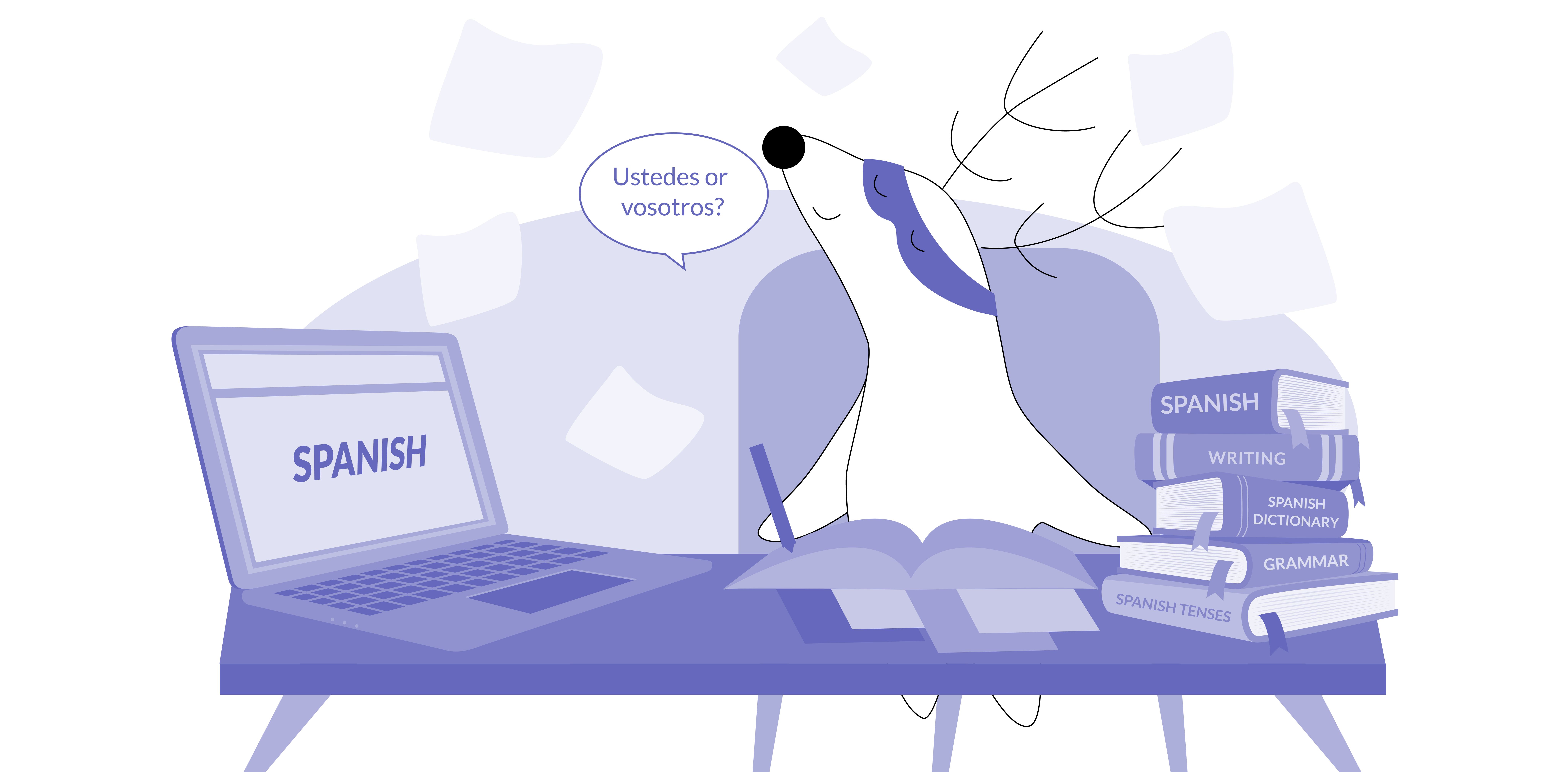
The Spanish language, known for its beautiful fluidity and complex constructions, contains a plethora of lengthy and intricate words. These words not only challenge learners and native speakers alike but also enrich the linguistic landscape with their depth and specificity.
Among these, a particular word stands out not just for its length but also for its fascinating etymology and application: Electroencefalografista. This word serves as a beacon for linguists and language enthusiasts, illustrating the boundless possibilities of language evolution and word formation.
Let's dive into the longest word in Spanish — a lexical giant that makes even experienced speakers pause for a breath.
Learn Spanish with Langster
The Royal Spanish Academy Dictionary
The authority on the Spanish language, Real Academia Española (RAE), plays a pivotal role in recording, standardizing, and updating the vocabulary of the Spanish language. Founded in 1713, RAE's mission is to ensure the stability and growth of the Spanish linguistic heritage.
Its comprehensive Diccionario de la Lengua Española is widely regarded as the most authoritative dictionary of the Spanish language, reflecting contemporary usage and incorporating new words that gain acceptance over time.
RAE's meticulous work not only preserves the richness of Spanish but also adapts it to the evolving landscapes of culture and communication, making it relevant for speakers across the globe.
Through a rigorous selection process, RAE continuously updates its dictionary, ensuring that the evolution of the language is accurately represented and providing a reliable resource for anyone fascinated by the depths of Spanish linguistics.
The Longest Words in Spanish
Ready to get to know the longest Spanish word? In this section, we'll delve into Spanish letters and vocabulary to unravel the secrets of its intricate words.
Electroencefalografista

Clocking in at 23 letters, Electroencefalografista is the longest word in the Spanish language. It refers to a medical professional who specializes in the use of the electroencephalogram — an apparatus used to detect electrical activity in the brain and also scan the human neck.
While this might be one of the lengthier words you'll encounter in day-to-day Spanish, technical terms, especially from the fields of law and medicine, can surpass it.
Esternocleidomastoideo
This is another of the longest words used by native Spanish speakers. This 23-letter term refers to a muscle in the human body that runs from the sternum and clavicle to the mastoid process of the temporal bone of the skull. It is primarily known for its role in rotating and flexing the head.
Anticonstitucionalmente
With 23 letters, Anticonstitucionalmente means "in a manner that is contrary to the constitution." This word is often cited in discussions about constitutional law and civil rights.
Internacionalización
At 21 letters, Internacionalización refers to the process of designing products and services so that they can be adapted to various languages and cultures, essentially, "internationalization." This term is particularly prevalent in business and technology sectors.
Contrarrevolucionario
Coming in at 21 letters, Contrarrevolucionario means "counter-revolutionary," referring to someone who opposes a revolution or revolutionary changes. This term is frequently used in political and historical contexts.
Honorable Mentions
In addition to the ones mentioned above, there are many other long words in Spanish that are worth mentioning. Here are a few honorable mentions:
Electroencefalografía
This 20-letter word refers to the process or field of study involving the recording of brain activity, more commonly known as electroencephalography (EEG). It is crucial in diagnosing and treating neurological conditions.
Desoxirribonucleico
This 20-letter term refers to deoxyribonucleic acid, more commonly known as DNA. It is the molecule that carries genetic instructions for the development, functioning, growth, and reproduction of all known organisms and many viruses.
Psiconeuroinmunología
Psiconeuroinmunología, with 20 letters, combines psychology, neuroscience, and immunology to study how stress and psychological factors impact the immune system. This interdisciplinary approach underlines the complexity of human health.
Otorrinolaringólogo

With 19 letters, this word found in any Spanish dictionary specifies a physician specialized in otolaryngology, the medical field that deals with diseases and disorders of the ear, nose, and throat (ENT), as well as related structures of the head and neck.
Electrocardiograma
At 17 letters, this term refers to a test that measures the electrical activity of the heart to show whether or not it is working normally. It is a primary tool for diagnosing heart conditions.
The Composition of Long Spanish Words: Understanding Compound Words
The most elongated words in the Spanish language, as illustrated through examples like Electroencefalografista and Anticonstitucionalmente, share a common trait: they are predominantly compound words.
Similar to many languages, longer Spanish words are formed by merging two or more words to create a new term with a distinct meaning. These compounds are often constructed for specific fields, such as medicine, law, and technology, where precision is paramount.
The process involves linking together nouns, adjectives, verbs, or prepositions to create terms that succinctly describe complex concepts, processes, or professions.
This linguistic mechanism not only enriches the Spanish vocabulary by creating a longer word but also illustrates the language's capacity to adapt and grow by encoding new realities and advancements in a single word.
Affixation

The creation of such long compound words in Spanish is not arbitrary but rather a testament to the language's flexibility and its speakers' need to encapsulate elaborate ideas within a single lexical unit.
A prime example of this linguistic phenomenon is the word superextraordinarísimo, which, at 22 letters, signifies something "very extraordinary" to an exaggerated degree. This word exemplifies how affixation — specifically the use of superlatives and augmentatives — plays a crucial role in word formation, adding layers of meaning and intensity.
Affixation in Spanish, a critical process in word formation, involves adding prefixes, suffixes, or infixes to a base word to create new words or alter a word's meaning. This linguistic mechanism allows for the expansion of the Spanish lexicon, accommodating new concepts and ideas.
Examples
For example, the prefix re- can be added to verbs to indicate repetition or intensification, such as rehacer (to redo) or reconstruir (to rebuild).
Spanish
English
Después de cometer errores en el diseño, tuvo que rehacer todo el proyecto desde cero.
After making mistakes in the design, he had to redo the entire project from scratch.
Tras el terremoto, la comunidad se unió para reconstruir las casas y devolver la normalidad al pueblo.
After the earthquake, the community came together to rebuild the houses and restore normalcy to the town.
Similarly, the suffix -ción transforms verbs into nouns, turning operar (to operate) into operación (operation), thereby broadening the word's application and context.
Spanish
English
Los cirujanos necesitan un alto nivel de habilidad para operar con precisión.
Surgeons require a high level of skill to operate with precision.
La operación militar fue meticulosamente planificada para asegurar el éxito de la misión.
The military operation was meticulously planned to ensure the success of the mission.
Another common suffix, -mente, is used to form adverbs from adjectives, changing rápido (quick) to rápidamente (quickly).
Spanish
English
El tren de alta velocidad es una forma rápida de viajar entre ciudades.
The high-speed train is a rapid way to travel between cities.
El equipo de rescate actuó rápidamente para salvar a los excursionistas atrapados en la montaña.
The rescue team acted rapidly to save the hikers trapped on the mountain.
Through these affixations, Spanish can efficiently generate a plethora of new words, each carrying distinct nuances and applications that showcase the language's dynamic and adaptable nature.
The Bottom Line

Exploring the labyrinth of long Spanish words uncovers not only the language's richness and adaptability but also the culture's dedication to precision and expansiveness in expression.
These traits remind us that language is not just a tool for communication but also a playground for creativity and a mirror reflecting the complexities of human thought and society.
If you're intrigued by the beauty and complexity of Spanish or wish to learn more about how languages weave together culture, history, and innovation, Langster is your ideal companion. Download Langster today, and plunge into the depths of language exploration, where every word is a new adventure waiting to be embarked upon.
Learn Spanish with Langster









